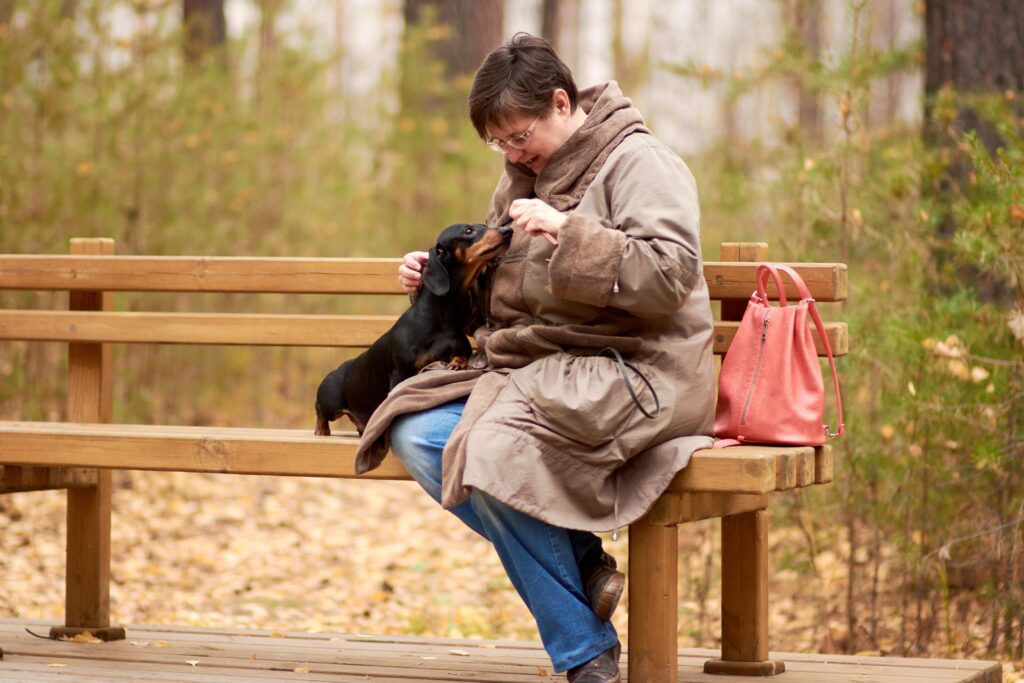Just like humans, dogs have their own emotions too. How they act and react can indicate how they are receptive towards their current or previous environments, what they need or don’t want, and how they feel. Some indicators are more straightforward to tell than others, like if your dog likes the sweater you put on them or if they need to go outside to use the restroom. But some attitudes your dog expresses may not be as evident to dog owners. Learning how your dog’s body language and mood may indicate will make it easier for dog owners to meet their dogs’ needs and communicate better with their dogs.
- Excitement/Playfulness: Ever come home and your dog races down to your feet? Does your dog get excited around strangers? Does your dog get excited when you pass by their dog toys? It’s clear; your dog enjoys the interaction and active stimulation. All dogs need attention and love; playtime is an excellent way of giving them the kind of quality time they want from their owners. Dr. Marc Edward explains to PetsBest that the common ways to indicate your dog is in a playful/excited mood include: their head being close to the ground, their rear is in the air, the tail is up and wagging, and their ears are up, and their mouth may be open. Ensuring your dog is getting an adequate amount of playtime incorporates a manageable routine for yourself and your dog. An example would be taking your dog on their daily walk and bringing along dog toys so your dog can play for a bit in an open area before heading home. Your dog is excited to see you, so make sure they know you’re excited to be around them too.
- Anxiety/Separation Anxiety: Dogs can note the reactions they get for their behavior, or maybe they don’t like being alone. Sometimes, a dog’s reaction or behavior may seem normal if they have been doing it for a while. But don’t let this kind of behavior become a habit or go unnoticed; your dog’s behavior indicates what they need from their owners. Easing your dog’s anxiety and separation anxiety should be as much a priority as feeding and walking your dog as well. If your dog has been exhibiting behaviors such as “shaking, tail tucking, escapist behavior, defecating in the home, biting or injuring himself, barking[…]”, HillsPets listed those traits as displays that your dog is experiencing anxiety. Help your dog feel comfortable in their home environment along and others. Your dog probably doesn’t feel like your home is their home too. When you’re gone, they’re not sure what to do with themselves and if you’re going to come back. Your dog wants reassurance that their dog owner is there for them. So try setting up a dog cam to check in with your dog or an automatic treat dispenser, so your dog has some interaction while you’re gone. Never pressure them or overstimulate them in new surroundings or new people. Try and take note of what works and what doesn’t work to keep your dog happy.
- Fearful Aggression or Submission: There are two different types of fearful dogs: aggressive and submissive. How do you tell if your dog is experiencing fear? What contributing factors may have caused your dog to react this way? How could you calm down your dog to make them trust you?
A fearful aggressive dog will likely become aggressive when they feel a threat is near or approaching. Dogs are more likely to attack rather compared to fearful submissive dogs. Jennifer Nelson explains that this behavior is typical in dogs that were abused and not appropriately socialized as a puppy (Animal Humane Society suggests socializing your puppy from week 3-20 in their early life) struggling with fearful aggression. How do you know if your dog is dealing with fearful aggression? According to Dr. Edward, indicators of a fearful aggressive dog include: lowering their bodies. Their tails tucked in, ears are tucked back against the head, and raised hackles. Managing your dog’s aggression may be difficult, but it is important not to encourage or let this behavior prolong. Figure out what’s triggering this behavior and try different approaches to minimize an aggressive reaction. Refrain from raising your voice or raising your arms around a fearful aggressive dog; they might find it threatening, which may trigger an aggressive response. Refrain from punishing your dog for their aggressive behavior; understand that this is a reaction that your dog has learned overtime to protect themselves. Attempt to learn how to deescalate these aggressions and consider a dog trainer to minimize your dog’s fearful aggressive behavior.
A fearful submissive dog will likely not keep eye contact and doesn’t do well under stress. They do not try to threaten others out of fear but are more likely to seem more withdrawn. It’s easy to misunderstand this behavior as first as anti-social, or maybe your dog doesn’t do well in certain situations. But it’s a good thing to try to ease your dog’s fears by trying to approach things differently around your dog. Take note of when your dog is behaving submissively. Fearful submissive behavior Dr. Edward tells dog owners to look out for include: your dog’s body is towards the ground, their ears are against their head, their hackles are down, their tail is down but untucked, “they may wag their tail briefly in its down position.” It’s common for puppies who are fearfully submissive to urinate, according to Reader’s Digest. Consider changing your behavior and how you interact with your dog. Dogs want to be at ease in your presence, so if you notice they seem frightened or withdrawn when you attempt to discipline them, try a different approach. Your dog may be more responsive if you change your tone around them, and you show them that their bad behavior does not anger you, but it’s unacceptable.



